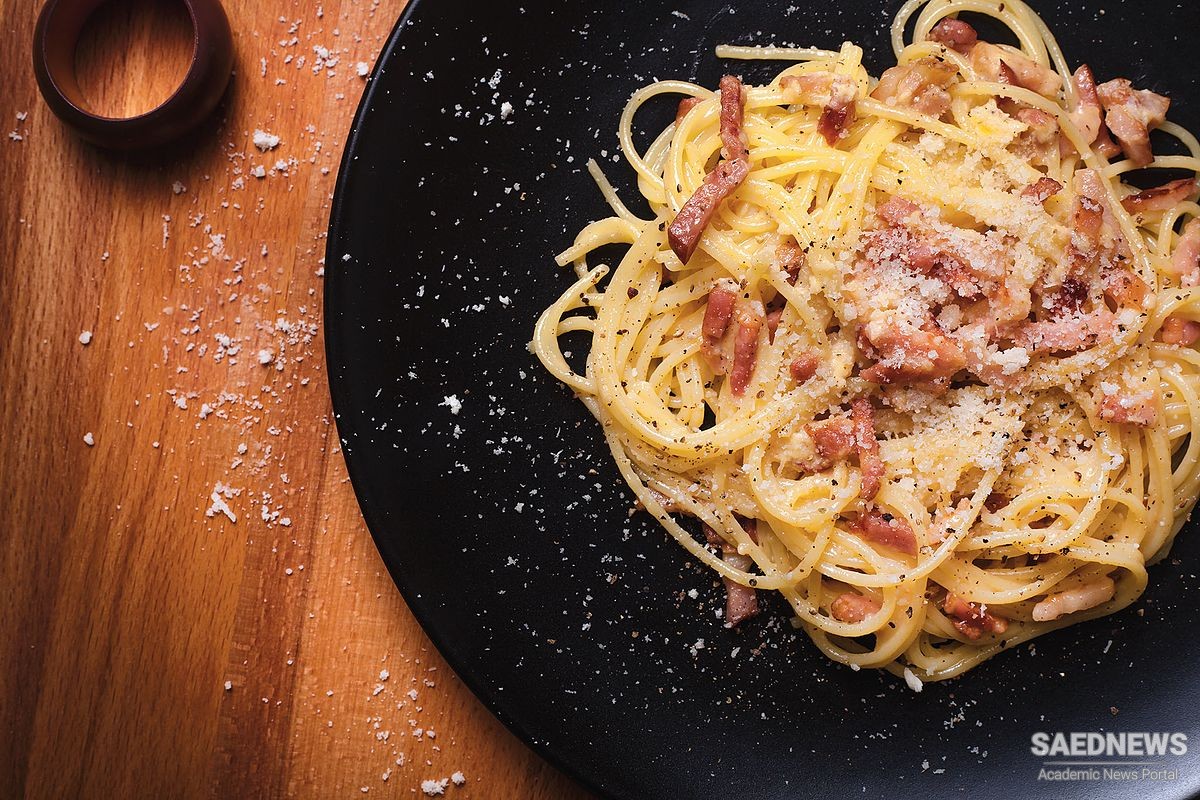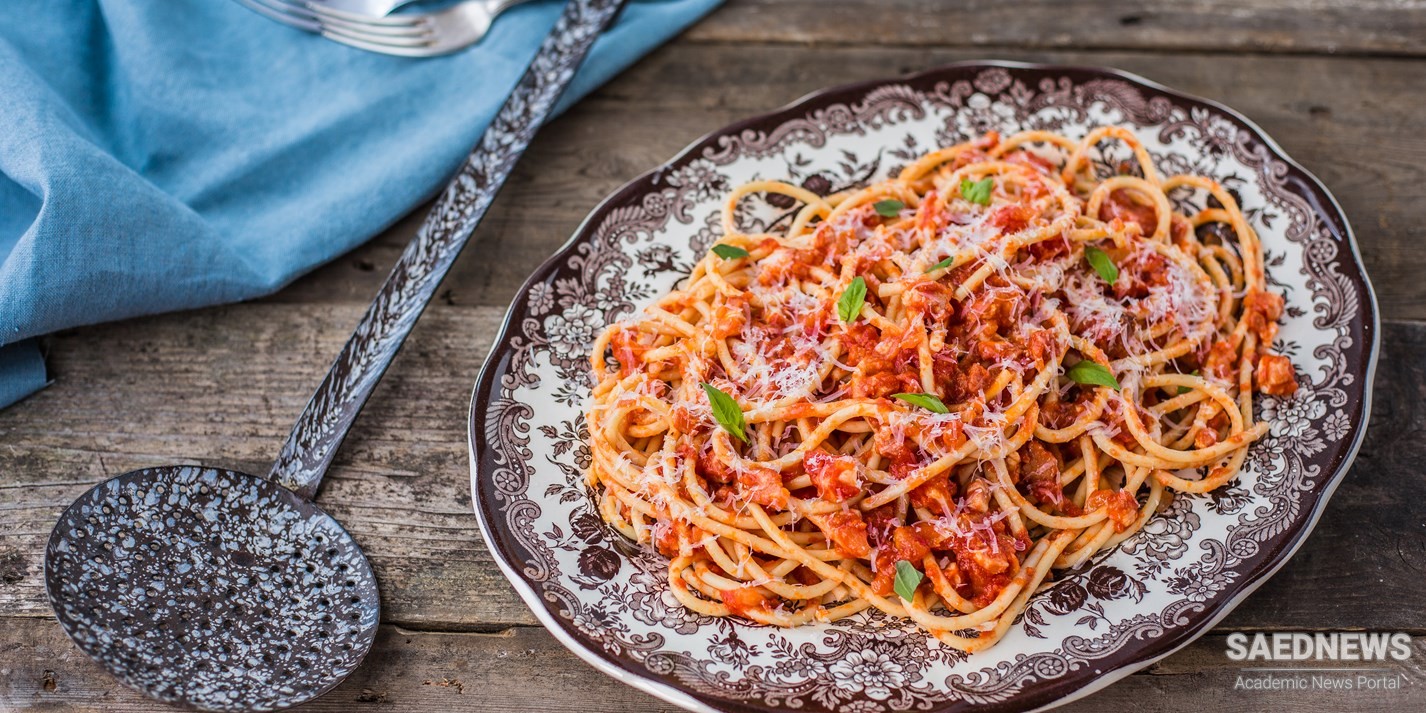Pasta features in soups such as pasta e fagioli or pasta e ceci, the famous thick soups of ditalini (short macaroni) and beans or chickpeas. Both contain finely chopped onion and garlic as well as celery and carrots. This is true peasant food – cheap, nutritious and using ingredients that grow everywhere and are easily stored. If you really wanted to knock up a speedy version you could use tinned beans, making the road to Rome both a quick and straightforward one from your kitchen. Rachel Roddy, the author of fantastic Roman food blog Rachel Eats and of a cookbook, has contributed her delicious recipe for pasta e ceci, included at the end of the section.
Other Roman pasta sauces include the classic carbonara, a carefully arranged combination of guanciale3 (unsmoked Italian bacon) or pancetta, eggs, butter, cheese and black pepper with rigatoni or spaghetti. Freshness is key with carbonara and I urge you to dig out a good recipe (try Jacob Kenedy’s in The Geometry of Pasta) and make it at home – you’ll find it is a different beast from generic restaurant versions or, worse still, the stuff of supermarkets, which curdles so easily. Rigatoni might also be eaten with tomato sauce and pajata, in a dish that fuses the Roman penchant for pasta and heavy-duty meat eating. Pajata is not for the faint hearted; resembling a cheese sausage, this is an unweaned calf’s intestine filled with milk chyme (its mother’s milk, undigested). Believe it
The Romans leave little to the imagination when it comes to eating meat and often indulge in its pleasures with minimal seasoning. Abbacchio alla Romana is a typical example: young lamb with garlic, anchovy and salt. At the other end of the spectrum are offal dishes such as trippa alla Romana, which features tripe cooked with tomatoes, white wine, pecorino, bay and mentuccia (wild mint). This and more can be found in the Testaccio district just south of Rome, Lazio’s slaughterhouse capital until 1975. Testaccio remains a centre for butchery, with a highly localised cuisine prizing offcuts of meat, or ‘the fifth quarter’. These include testarelle (head, usually roasted), milza (spleen, often stewed or grilled), coda (tail, in stews and pasta sauces), and coratella (heart, lungs and oesophagus, commonly eaten with purple artichokes).



 Roman Cuisine of Lazio: the Hidden Gem
Roman Cuisine of Lazio: the Hidden Gem














































